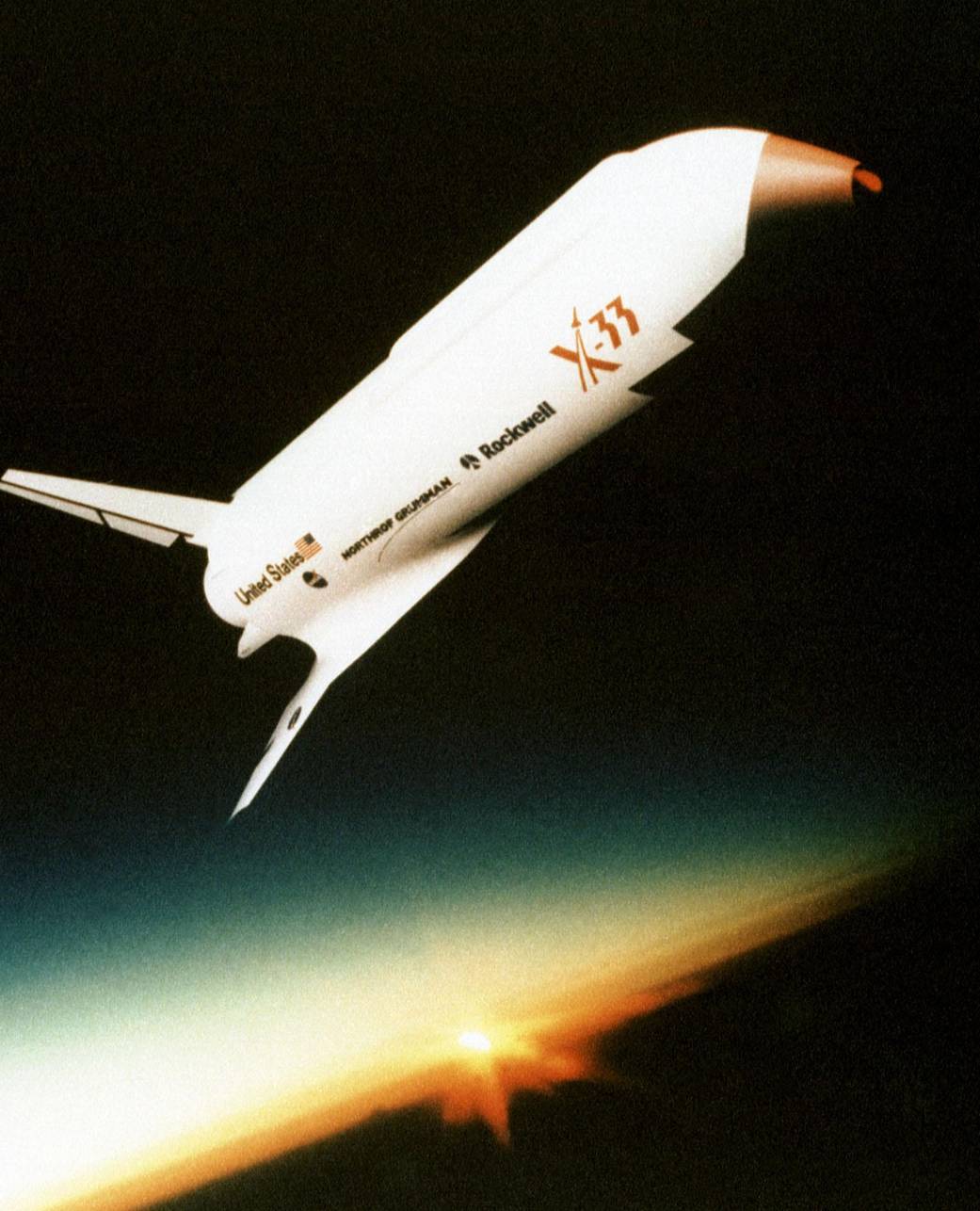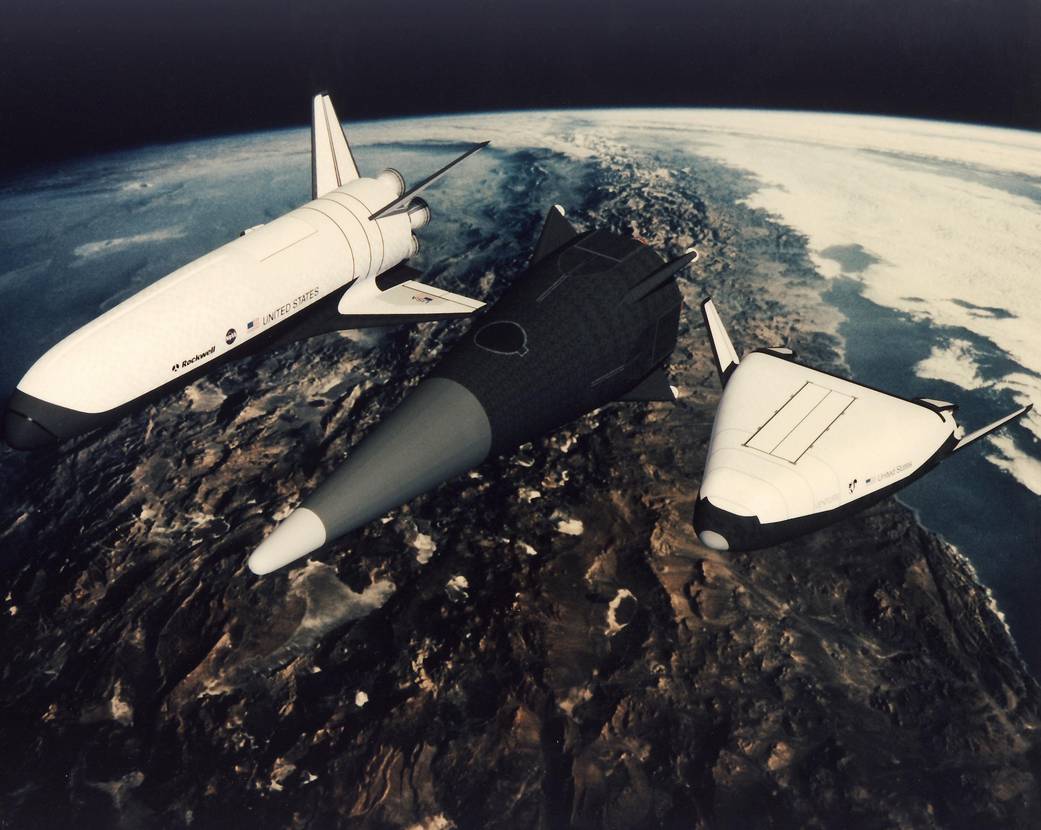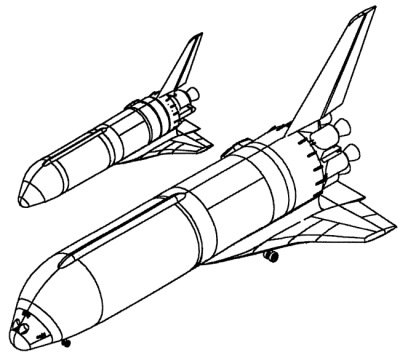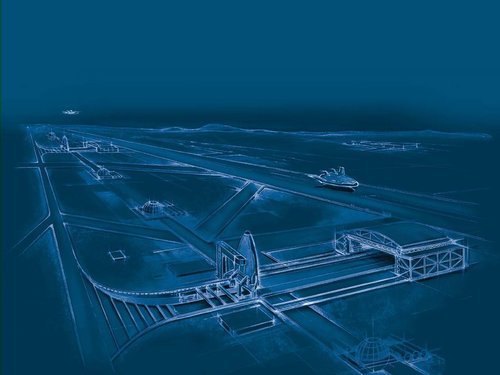You are using an out of date browser. It may not display this or other websites correctly.
You should upgrade or use an alternative browser.
You should upgrade or use an alternative browser.
Rockwell X-33 and RLV
- Thread starter Orionblamblam
- Start date
Vahe Demirjian
I really should change my personal text
- Joined
- 28 February 2013
- Messages
- 815
- Reaction score
- 570
More images of the Rockwell International contender for the X-33 competition can be found in Jay Miller's X-Planes: X-1 to X-45 and X-Planes Scrapbook, but also at the following links:

 www.nasa.gov
www.nasa.gov

 www.nasa.gov
www.nasa.gov
The Rockwell design surely looks like the STS Space Shuttle system except that the fuselage is longer. There was one proposal for a V-tail Rockwell International design for the X-33 contest.

Rockwell International X-33 Technology Demonstrator Proposal - NASA
This artist's rendering depicts the Rockwell International X-33 technology demonstrator.

X-33 Artist's Rendering - NASA
This artist's rendering depicts the three designs submitted for the X-33 proposal for a technology demonstrator of a Single-Stage-To-Orbit (SSTO) Reusable Launch Vehicle (RLV).
The Rockwell design surely looks like the STS Space Shuttle system except that the fuselage is longer. There was one proposal for a V-tail Rockwell International design for the X-33 contest.
martinbayer
ACCESS: Top Secret
- Joined
- 6 January 2009
- Messages
- 3,398
- Reaction score
- 3,906
The Rockwell X-33 concept was the most logical and credible one of the contenders, since it was based on real world Space Shuttle experience. If you look at the "evolution" of the competing Lockheed and McDonnell Douglas designs, the Lockheed "Aeroballistic Rocket" over time started sprouting sizeable wings with winglets that belied the "lifting body" qualities, and both aerodynamic surface and body surface per (squashed instead of circular/cylindrical) body volume grew higher than that of a classical wing body design, while the "ballistic" son of DC-X all of a sudden needed wing "stubs" for reentry as well - a phenomenon that magically reappeared on Musk's BFR/Starship/whatever as well. As they say, quality never goes out of style...
Last edited:
- Joined
- 9 October 2009
- Messages
- 21,979
- Reaction score
- 13,638
If I am not mistaken, the 'stubs' were added as a fuel saving measure while maintaining landing precision and cross range ability. The added redundancy in case of partial propulsion/manoeuvring failure was a handy bonus, especially when it came to the latter attribute. Which leads us to another probable major reason for their addition. Thanks to it's inherent ability to relocate itself between geographically separated landing and launch sites via suborbital hops, interest began to mount in the possibility of using the planned full sized Delta Clipper as not only a SSTO but also as an honest to God suborbital transport for passengers and cargo. So the redundant control ability would have helped to assuage potential FAA concerns.
Another rendition of aborted future from Hazegrayart. In picking between Lockheed/Venture Star and McDonnell Douglas/DCX, it would have been useful to have had a clause stipulating IR&D commitment to underwrite alternative solutions to any technical snags during development. I am not hopeful of Boeing persevering beyond government funding when it comes to the XS-1 and perhaps even reaching the launch pad.
- Joined
- 1 April 2006
- Messages
- 11,397
- Reaction score
- 10,314
Hazegrayart CGI videos are amazing.
Some search for references would be useful before putting efforts into making video with many mistakes though.
Similar threads
-
McDonnell Douglas X-33 SSTO Reusable Launch Vehicle
- Started by athpilot
- Replies: 0
-
-
Scott Lowther (Orionblamblam)'s APR and Drawings sets
- Started by overscan (PaulMM)
- Replies: 3
-
-


